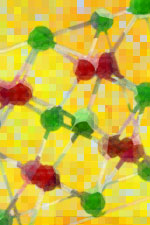New Paper - "Thermal conductivity and energetic recoils in UO₂ using a many-body potential model"
We are please to announce a new publication in collaboration with ANSTO on the effect of radiation damage on the thermal conductivity of UO2 using our recently developed many-body actinide oxide potential.
A comparison of the damage profile predicted by the many-body potential is made against previous potential models. A significant degradation in thermal conductivity is then predicted as a consequence. The conductivity of amorphous UO2 is also calculated.
- M.J. Qin, M.W.D. Cooper, E.Y. Kuo, M.J.D. Rushton, R.W. Grimes, G.R. Lumpkin and S.C. Middleburgh, “Thermal conductivity and energetic recoils in UO2 using a many-body potential model”, Journal of Physics: Condensed Matter, 26 (2014) 495401. doi:10.1088/0953–8984/26/49/495401

